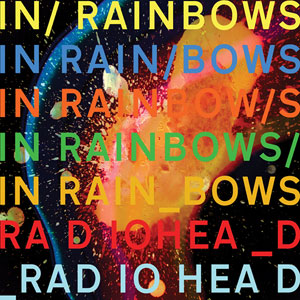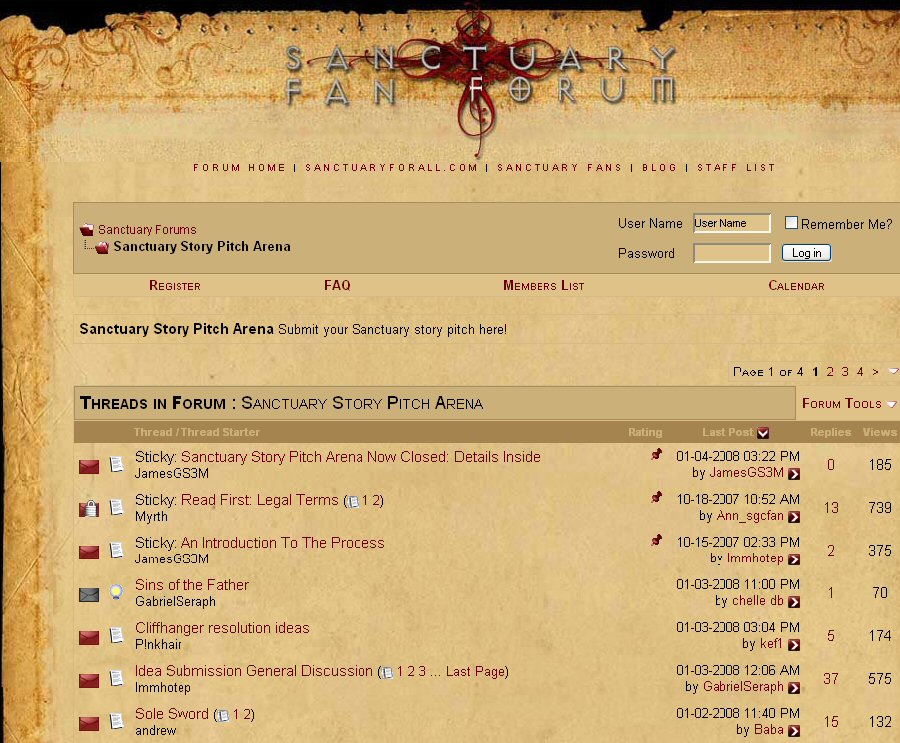From Irrelevance to On-Demand: Changing Models of Dissemination

The ongoing writers’ strike has emphasized something I’ve long suspected: the sheer irrelevance of the way the current corporate structure disseminates content. Sure, writers and producers are duking it out over DVD residuals, but the real issue, as trenchantly pointed out by Howard Gould, is dissemination by new media: streaming over the Internet, downloads, TV and movies on demand, content delivered to phones. It has become painfully clear that the way audiences want to consume culture is not the way Big Media wants to give it to us. We want it right away, without any pesky delays. We want it on demand. We want to be able to watch it, in relatively high quality, on our TVs, our iPods, and our computers. We want to keep the file forever and copy it as many times as we want. And no, we don’t want ads. Big Media is still stuck on the old modes of dissemination: after initial airing, release it according to geographical location, in several different kinds of mutually exclusive media, for fees we don’t want to pay because the quality is either too poor (iTunes) or too good (DVD).
The outlets that Big Media supports by providing content—sites like iTunes.com and Amazon.com’s Unbox—are, to them, ways to earn money after the show airs on regular TV, or after the film has had its run. With the most recent TV season, they used the Internet to get people up to speed on story lines or to give out freebies to get viewers in front of their televisions for more. But as the writers’ strike drags on and new scripted content dries up, as people are downloading and renting en masse in order to get their entertainment fix, as YouTube.com and Netflix become my new best friends, I have to ask: isn’t there a better way? Big Media is using the same model it has been using for decades. However, things have changed: this Internet thing isn’t an experiment. Big Media needs to think about moving into a new era—one where they pay their writers appropriate residuals, of course, but also one that takes into account the way people actually want to consume media. A few grand experiments are underway that experiment with dissemination. Here are two, one in music and one in TV: Radiohead’s online-only release of their new album In Rainbows, and live-action online-only Webisodes of the sci-fi drama Sanctuary.
Radiohead did more than initially release their latest album, In Rainbows, for online download only.1 They asked downloaders to pay as much as they liked, including nothing at all, for the album, an action that many perceived as frankly insane. With Internet music piracy rampant despite attempts to crack down, Radiohead’s decision seemed bold, particularly because statistics by Comscore revealed that only 38% of downloaders chose to pay. Critics of the experiment quickly pointed out that a 38% pay rate is low; others hailed Radiohead for parlaying their fame and huge fan base into a successful experiment that other bands might model, with the Web used to officially market and distribute a product directly to the fans. Everybody wins, except the old-guard model of content delivery. The band gets to keep more money, and fans are more likely to go to the official site and download a copy, rather than obtaining it illicitly.
The label-free mode of dissemination was tried by others, with about the same degree of success as Radiohead—which is to say, far fewer people seemed willing to pay for their tunes than the bands expected. Trent Reznor of Nine Inch Nails produced for his colleague Saul Williams the album The Inevitable Rise and Liberation of Niggy Tardust with online release; the first 100,000 customers got it for free. Fewer than one in five people paid the requested $5. Yet the Canadian band Stars, with the blessing of their label, Arts & Crafts, officially released In Our Bedroom After the War on iTunes in July 2007, two months before its release date, where it proved popular, appearing regularly on the most downloaded list.
Music is one thing. We’re used to low-quality, shared music. Television, on the other hand, is fraught with problems that make the Radiohead model of dissemination unlikely; as critics rightly point out, only a band with a huge following could pull off this kind of experiment and actually make money. Putting together a television program requires far more people and resources than putting together an album, and although Web-only releases with huge fan bases have garnered much attention—witness the Halo-based machinima series Red Versus Blue—only recently has a big-budget, live-action TV-style Web-based series decided to buck the studio system.
[youtube]http://youtube.com/watch?v=uJF7djrYUzQ[/youtube]
Sanctuary, a sci-fi/horror Web series, has to-date released eight slick, professionally directed and acted Webisodes, each about fifteen minutes long. They may be purchased in two widely readable formats, QuickTime and .wmv, at two price points: a cheaper lower-resolution format, and a more expensive high-definition format. The episodes may be streamed from Sanctuary‘s official site for free, and official trailers are available at YouTube.com. News of the show spreads by word of mouth, not ads, although viral fan marketing has been helped along by the creators’ credentials: Damian Kindler is well known among fans of the Stargate franchise for his writing and production work, and some actors well known for their work in the Stargate franchise have been cast, including Amanda Tapping in the lead role.
Although the show’s online-only dissemination is new, also new is the approach that the production team, Stage 3 Media (S3M), chose to take when creating it: the program is entirely digital. Much of the show is shot with the actors in front of a green screen, using only small props. Technician-artists add in beautiful CGI backgrounds during postproduction. To exploit the freedom of setting, the program ranges widely: the streets of Victorian England, a subway in modern America, a moor in King Arthur-era Britain, or Helen Magnus’s (Tapper) huge monster-holding facility.



The show’s “About” Web page notes that “Sanctuary is the first broadcast quality, High Definition dramatic series designed specifically for the Internet.” The show has another impressive first to its credit: it holds a Guinness record for the highest-budget Internet show. Private investors, including lead actress Tapping, are fully financing this experiment in multimedia, and all seem fascinated by the possibility inherent in the project’s all-digital nature. S3M seeks to create a text that can easily be repurposed to another media format: the episodes can be easily formatted to disseminate by Web, broadcast TV, or DVD, to be viewed on an iPod, a computer, or a TV. Such broad multiformat dissemination is the future, S3M believes. At the moment, the show has seen only Web release, although delivery via the other formats is being considered and negotiated.
S3M CEO Marc Aubanel remarks, “We decided to take the plunge ourselves and self-produce our content rather than go through a large company…the power is shifting from programmers to the consumer.” With this in mind, S3M decided to start with a sci-fi project, rather than any other genre, because of fan feedback. Fans have weighed in on many aspects of the show, and the production team responds to it. One big win for the fans was normalization of the pricing structure, which was formerly based on geography but changed to a flat structure after fans complained. S3M also plans multimedia tie-ins, including merchandise and an online graphic novel, which is currently being released one page at a time in .pdf format, plus Web-based social networking, interactivity, and Flash games, and instant messaging. Some of these items are still works in progress, but they illustrate the model that S3M has in mind: interactive, fan based, responsive, free of ads.
The importance of fan engagement is one that S3M takes seriously. The creators designed an official fan site, Sanctuaryfans.com, alongside the main download site, and the producers of the content use this space to engage directly with fans. For example, certain technical aspects of the show’s production have been made available, and short videos feature cast members talking about the show. This give and take between producer and consumer will help fine-tune the business model, and it will help determine the direction of story lines.

In this kind of project, just as in Radiohead’s experiment in reaching out directly to fans, interactivity is equally as important as content or multiformat capabilities. The wall between producer and consumer is still there and still controlled by the producers, but that wall grows more permeable every day, particularly as consumers clamor for a way to get content that meets their needs for timeliness, format, quality—and legality. It’s long past due for the current models of dissemination to be reworked to take into account the needs of both the producers and the consumers, and the viral success of Radiohead and Sanctuary are two warning shots across the bow of Big Media.
Image Credits
1. Radiohead, In Rainbows on the Internet
2. Images are shot in green screen, after which backgrounds are created in postproduction (1)
3. Images are shot in green screen, after which backgrounds are created in postproduction (2)
4. Images are shot in green screen, after which backgrounds are created in postproduction (3)
5. Sanctuary’s fan forum includes a bulletin board for story pitches by viewers (Screenshot provided by author)
Please feel free to comment.
- The online-only deal was short-lived; the album is now only available as a discbox. [↩]
The Sanctuary example also strikes me as a very interesting extension of convergence. Sci-Fi fans have long used the internet to interact and talk about their favorite programs and stories, perhaps at a rate greater than fans of other genres. Thus, launching these webisodes aimed directly towards them is a brilliant move because the audience is already online and essentially doing what the producers want. Plus, Sci-Fi fans tend to be particularly rabid consumers of material, and perhaps more likely to try the new webisodes in the first place.
I wonder if webisodes of programs in other genres would prove as successful. Soap opera fans tend to be fairly devoted, so that might be an interesting way to branch out. But for formats such as police procedurals or lawyer shows, I wonder if the fan base would be interested in turning to the internet for new content.
Pingback: FlowTV.com dissemination essay « Karen Hellekson
Despite what may be an overwhelming need for digital dissemination, I can’t help but think that there will always be a connoisseur/collector niche that companies will have to fill. It’s the market segment that appreciates the convenience of mp3s but favors the sound quality and packaging of vinyl, that may keep TV episodes or films on their laptop or iPod, but still purchases deluxe edition box sets.
I too think that the genre issue related to this topic is important. Speculative genres, SF, F & H, appear to have active fan communities that are also willing to “work” for their narrative fix. Dressing up like Freddy or a Klingon takes a lot of hard work! The Sanctuary pay off is potential impact in the storyline. I’m guessing the Radiohead payoff is in popularity? I guess I’m wandering around to saying, if these methods of dissemination start to require more “work” from the fan to cover the “cost” of skipping the production company, what payoff are the fans getting? Or have I missed a point?
Shelley, good question about payoff, and the answer is, the payoff is, fans get to be in the know–having special inside information, or early information, or direct contact with the producers. In the fan world, this kind of intel and contact are regarded highly.
Fans will do a bunch of stuff for free, including creating dense fan sites that organize canonical information (witness Memory Alpha, a wiki that describes the Trek universe). Fans do a whole lot more than write fanfic or create other transformative works. Some of these skills are valuable: beta testing official sites, getting an early reaction for a story arc, reporting news to generate buzz, etc.
I’m interested to see what producers want from fans, and what fan activities lend themselves to such producer-ly exploitation. Obviously both sides get something out of it. But I’d say producers are fundamentally more interested in money and product, and fans are more interested in an emotional fix and internal canonical coherence.
I’m not sure what Radiohead’s fans’ payoff is, BTW. Having the album first? Reveling in their coolness?
Karen, So…if fans are doing more “work” instead of traditionally “paying” for their “fix”…how are we going to get the production folks paid? Or…are we going to start seeing more fans who do higher end production because they are not getting paid in the traditional manner? Humm…brain is spinning.
A few more details regarding the release of Radiohead’s “In Rainbows”:
1. The album was also released on CD and LP in January.
http://www.thestar.com/enterta.....cle/265164
2. Radiohead disputes ComScores sales figures for the “pay as you like” downloads:
http://www.mathewingram.com/wo.....naccurate/
3. Finally, some controversy has emerged about the strategy of offering the album in digital format. First, the digital encoding rate was at a lower quality than earlier Radiohead albums. Combined with no early announcement that an eventual CD release would occur, this has made some fans suspicious that such a move was made in an effort to get them to purchase the eventual CD. Indeed, Radiohead’s managers eventually confirmed that the online download strategy was essentially a marketing tactic for the later announcement of a CD release.
http://www.usatoday.com/life/m.....load_N.htm
While Radiohead’s Thom Yorke suggests the traditional release is to benefit those without “technological access” to a digital download, the admission by the management team that this was all part of an elaborate marketing maneuver is quite disturbing. Certainly it conforms to the way traditional businesses react with anxiety to methods that might disrupt their notions of “standard procedure.” I’m curious, though, to see the long-term effects of ALL of this story.
Je tiens à vous remercier pour l’intelligence que vous nous montrez. Parfaitement ce dont j’ai besoin. Longue vie à votre blog.
Cela m’est extrêmement précieux ! j’ajoute votre blog à mes favoris. Bravo !